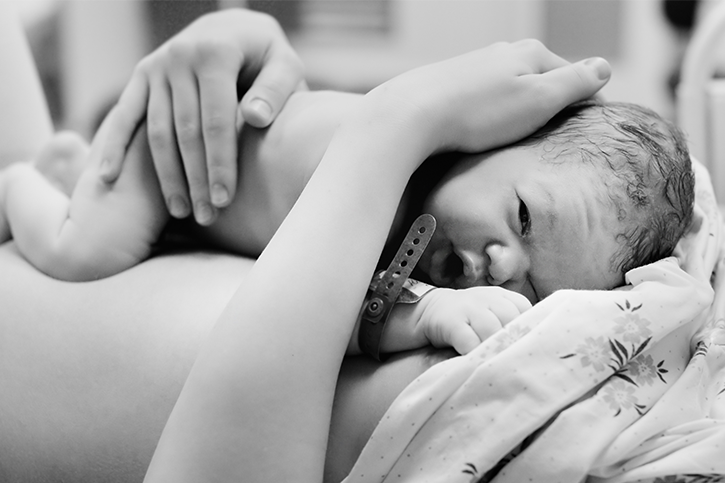For most pregnancies, labour will occur spontaneously at some point between the 37th and 42nd week. However, in some circumstances, an induction of labour (IOL) may be required to ensure you and your baby are healthy.

Most of the time labour will occur spontaneously on its own accord, but sometimes your baby might need some help along. Here’s what you can expect from induced labour.
An IOL is when labour is encouraged to start through artificial means.
Why Might I Need an Induction of Labour?
You may be offered/require an induction of labour if:
• You are overdue, meaning your pregnancy has gone beyond 41 weeks. This is the most common reason for IOL.
• Your waters have broken, but you haven’t gone into labour yet. An IOL is usually offered about 24 hours after your waters break to reduce the chance of an infection.
• You have a condition, such as preeclampsia, high blood pressure, RH disease, or kidney disease.
• Your baby is expected to be large due to diabetes.
• You have infection in your uterus.
• Your placenta is separating from your uterus.
• You are 40 years or older.
• Your pregnancy is the result of fertility treatment.
• Personal reasons or circumstances (for example, if your partner or family can’t be there for your due date).
How Is Labour Induced?
There are a number of ways labour can be induced. One (and sometimes more than one) of these methods may be used. Some may even have to be repeated:
Membrane/Cervix Sweep
This is where your doctor or midwife sweeps a finger around the opening of your cervix, separating the membranes from the uterus, which can stimulate labour. This is not recommended if your water has broken but contractions haven’t started as it can increase the risk of an infection.
Your doctor or midwife will inspect your cervix beforehand to see whether it is “favourable”, meaning slightly dilated, or “unfavourable” meaning it is closed. If it is favourable, and depending on the circumstances, you may be given the option to have your water broken immediately.
Prostaglandin
If your cervix is not favourable, your doctor or midwife may give you an artificial prostaglandin to help soften and thin your cervix, and stimulate contractions. This involves a gel (Prostin) or a tape (Cervidil) containing the drug being inserted into your vagina. You will then have to wait to see the result.
Balloon Catheter
If prostaglandin is unsuitable, a balloon catheter may be recommended instead. There are many different types of catheters and dilators that are used. Foley’s balloon catheter is the most common. This process involves two balloons being used to gently put pressure on the cervix, encouraging it to soften and dilate.
Artificial Rupture of Membranes (ARM)
If your cervix is favourable, and you and your baby are ready to go, you may be given the option to have your waters broken artificially. This is where a special hook is inserted into your vagina to break the amniotic sac that holds your baby, allowing the fluid within to be released. You will then wait for contractions to start. If they have not begun within an hour or two, another induction technique will have to be used.
Synthetic Oxytocin
Oxytocin is a natural hormone that floods the bloodstream during labour. Synthetic forms may be used to help stimulate the uterus to contract. They are administered via an intravenous drip and are suitable if a membrane sweep or prostaglandin hasn’t been successful inducing your labour, or if you’re having contractions but your labour isn’t progressing.
Initially the dosage is small, but it’s increased as your contractions establish a pattern and consistency. Contractions that are a result of synthetic oxytocin tend to be more painful than is usual, and you may be offered an epidural to help with the pain.
What Are The Risks of Induced Labour?
While induced labour is often required to minimise the chance of any complications and to ensure you and your baby are healthy, there are some risks involved:
• Your baby may be born too early, increasing the risk of complications.
• Synthetic oxytocin (called Syntocinon, in Australia) can make labor contractions very strong and lower your baby’s heart rate.
• The risk of infection is higher if labor doesn’t begin soon after your water has broken.
• The induction methods may fail, meaning you will have to have a caesarean section (which is a very safe procedure!)
• Greater risk of the baby being in an unfavourable position during labour.
• Increased risk of forceps or vacuum extraction being used for birth.
• Risk of a uterine rupture, which is a rare but serious complication where the uterus tears open. This is much more likely if you have a scarred uterus, from a previous caesarean section or other surgery to your uterus. If you have had previous surgery to your uterus, you cannot have labour induced with drugs.
If you have any questions about your pregnancy, such as the possibility of an induced labour, please don’t hesitate to get in touch.
Dr Bevan Brown is one of the most trusted gynaecologist and obstetricians in Sydney. Personalised care and strong relationships with our patients is of utmost importance!
